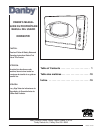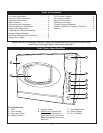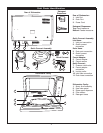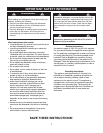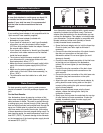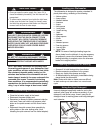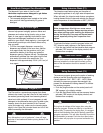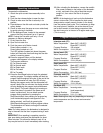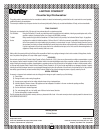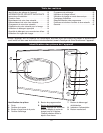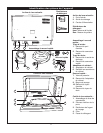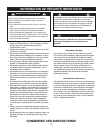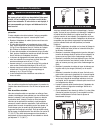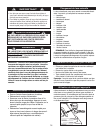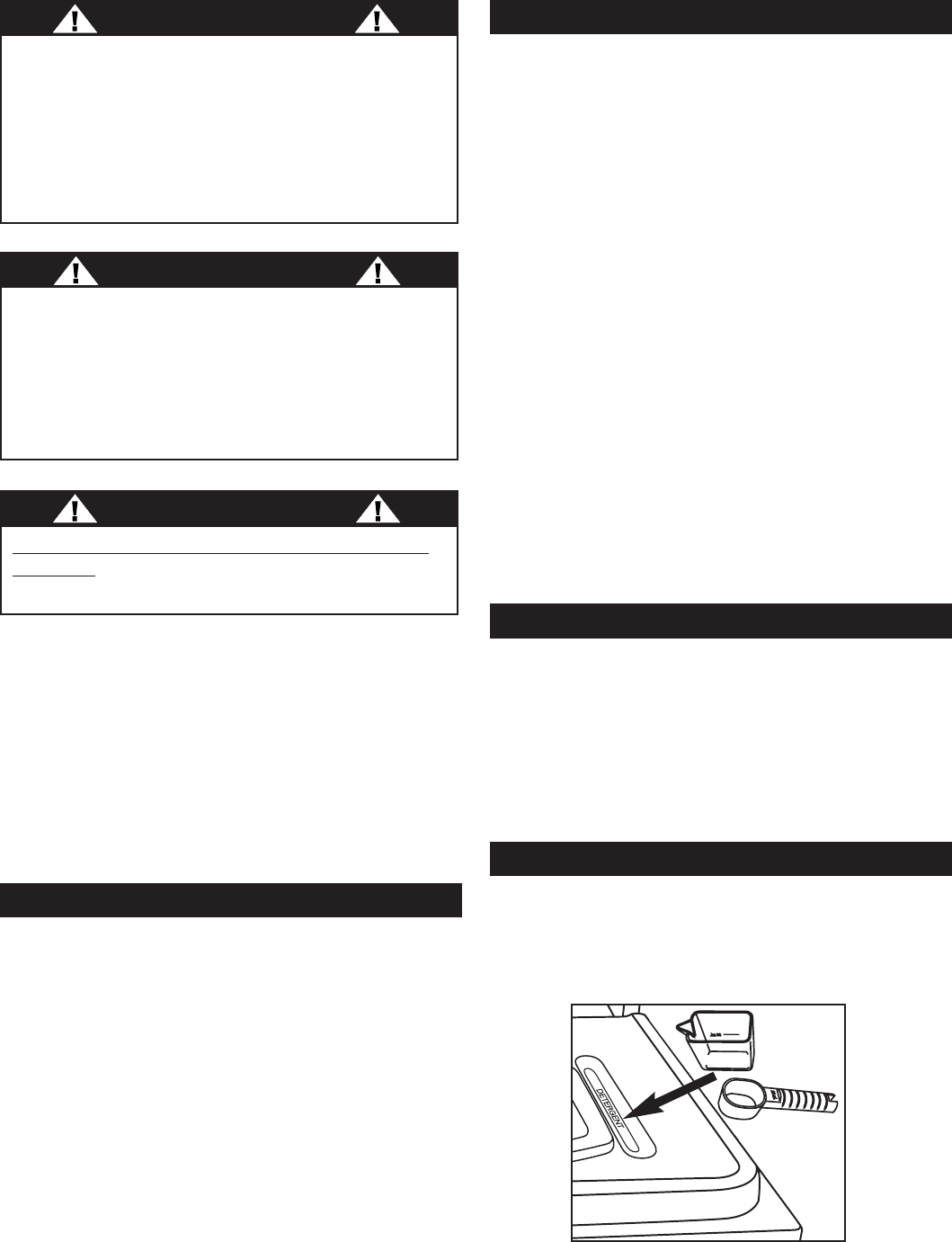
NOTE: Hard water conditions will adversely affect
the washing performance of your dishwasher. Hard
water conditions will also contribute to ‘lime’ (white
film substance) deposits and/or ‘scaling’ on the
stainless steel surface of the dishwasher tub and
heater element, located in the sump underneath the
removable filter screen.To assist in minimizing
these conditions, it is recommended to periodically
operate/rinse the inside of the dishwasher (empty)
using 1 cup of white vinegar at least once a week.
• Close the hot water supply at the faucet.
• Disconnect the power supply cord.
• Remember to release the water pressure inside the
inlet hose. Press and hold the red pressure relief
button on the quick-connect until the flow of water
stops.
• Disconnect the quick-connect hose assembly by
pulling down on the outer locking collar, (thus
releasing the quick-connect from the faucet adapter).
The dishwasher is designed to receive a standard ‘4-
piece’ plate setting, consisting of the following:
• 4 dinner plates
• 4 soup plates
• 4 dessert dishes
• 4 saucers
• 4 cups
• 4 tea spoons
• 1 oval platter
• 1 small serving
• 1 dish
• 4 glasses
• 4 soup spoons
•4 forks
• 4 knives
• 4 dessert spoons
• 2 serving spoons
• 1 serving fork
• 1 gravy ladle
NOTE: For ease of loading/unloading large size
dinner plates from the dishrack, it may be necessary
to temporarily remove the silverware basket. When
loading/unloading is complete, return the silverware
basket to its original position.
• Scrape off all solid food particles from dishes.
• Remove excessive quantities of oil or grease.
• Empty any liquids from glasses and cups.
• All dishes should be thoroughly rinsed before being
placed inside the dishwasher.
Note: Dishes with dried on foods are more difficult
to wash and may not come clean in a normal wash
cycle.
Use only detergent specifically made for use in dish-
washers (other types will cause over-sudsing). If your
detergent is old and/or lumpy, throw it away, as old
detergent loses its washing power and lumpy detergent
won’t dissolve.
IMPORTANT
• Once you open the water supply line, (even if it is
closed immediately thereafter), the inlet hose will be
pressurized.
• To relieve water pressure from inside the inlet hose,
(make sure the water line (faucet) is closed): press
and hold the red pressure relief button on the quick
connect until the flow of water stops.
WARNING
FAILURE TO RELIEVE WATER PRESSURE, BEFORE
DISCONNECTING THE QUICK-CONNECT FROM
THE FAUCET,WILL RESULT IN BACK-PRESSURE
OVER-SPRAY.THE TEMPERATURE OF INCOMING
WATER CAN BE VERY HOT, AND BACK-PRESSURE
OVER-SPRAY COULD CAUSE SEVERE BURNS
AND/OR SCALDING.
DANGER
DO NOT LET CHILDREN DISCONNECT THE DISH-
W
ASHER; CLOSE SUPERVISION OF CHILDREN IS
ALWAYS IMPORTANT AROUND APPLIANCES.
Disconnecting your Dishwasher
5
Loading your Dishwasher
Preparing your Dishes for Washing
Using the Right Detergent



